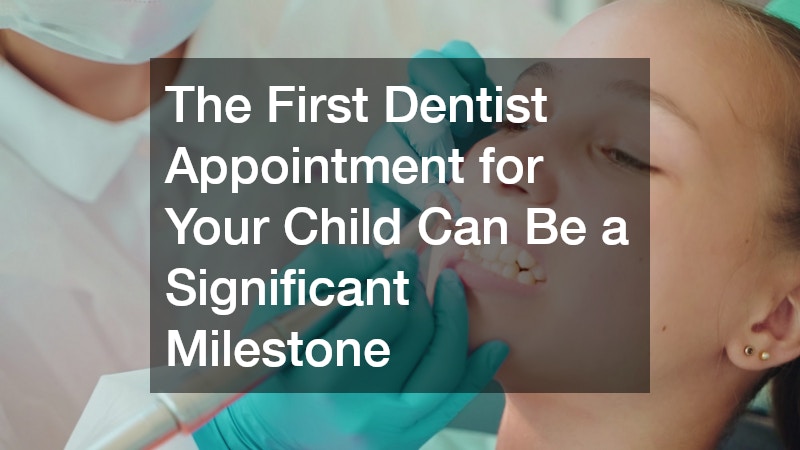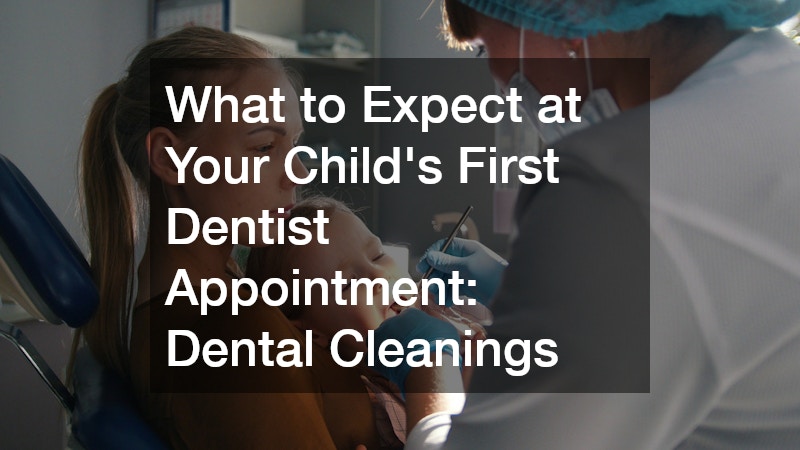The first dentist appointment for your child can be a significant milestone in their journey toward maintaining oral health. This article will guide you through everything you need to know about dental cleanings for children, what to expect at the appointment, and how to make your child comfortable with the process. Establishing a “dental home” early sets the stage for a lifetime of healthy smiles. A dental home provides a consistent place for ongoing dental care and helps familiarize children with dental visits. A primary aspect of this is cultivating a relationship between your child and their dentist. This relationship is essential for building trust and making future visits more comfortable and smooth. The concept of a dental home includes making dental visits a normal part of their health routine. It emphasizes preventive care and early detection of dental issues, contributing to better long-term oral health. A child’s dental cleaning is typically straightforward and catered to being a gentle introduction. The process usually begins with a visual examination of the child’s teeth to check for any obvious issues. Following the examination, the dental hygienist will clean your child’s teeth using specialized tools. This cleaning helps remove plaque and tartar, reducing the risk of cavities and gum disease. After the cleaning, fluoride treatment may be applied to strengthen the teeth. This protective measure enhances the enamel and provides a layer of defense against cavity formation. The American Dental Association recommends that a child’s first dental visit should take place after the first tooth appears and no later than the child’s first birthday. Early dental visits are crucial for initiating preventive practices and identifying potential issues at the outset. Visiting the dentist at an early age helps caregivers receive guidance on proper oral hygiene practices. This includes instructions on brushing techniques, diet, and behaviors that support oral health. Moreover, these early visits help normalize dental care for children, shaping their perception of these visits as a natural aspect of health care. Establishing a schedule early can foster a lifetime of regular dental visits. Even if your child has not reached the recommended age, certain signs can signal the need for an earlier dental visit. If your baby experiences discomfort while teething, this might be worth discussing with a dentist. The appearance of spots or unusual coloration on the teeth might indicate the onset of cavities or other concerns. Addressing these signs promptly can prevent more serious issues from developing. Furthermore, if your child has difficulty eating or their teeth come in misaligned, a dental exam may be necessary. Early intervention can facilitate proper oral development and address potential complications. Discussing the upcoming dental appointment with your child can help alleviate their anxiety. Use positive language and explain that the dentist is a friendly helper who will keep their smile healthy. Role-playing dental visits at home can familiarize them with what to expect. Pretending to be the dentist or patient reinforces their understanding of the process in a fun and engaging way. Children’s books and videos about visiting the dentist can also be an effective tool. These resources introduce the dental visit experience in a manner that’s educational and relatable for young children. Bringing along certain items can ensure the first appointment runs smoothly and is comfortable for your child. A favorite toy or blanket can offer reassurance and help soothe any nervousness. Additionally, carrying a list of questions or concerns you may have can be useful. This ensures any uncertainties about your child’s oral health or the cleaning process can be addressed during the visit. Remember to bring necessary documentation, such as insurance information and any medical records that might be relevant. This helps the dental office process your visit efficiently and is beneficial for initial diagnosis and care planning. The dental hygienist plays an essential role during your child’s cleaning appointment. They offer expertise in conducting thorough dental exams and cleanings catered to the unique needs of children. Apart from cleaning, they offer education about oral care, teaching you and your child essential hygiene practices. Reinforcing these habits contributes to healthier teeth and gums over the long term. The hygienist also works closely with the dentist to highlight any issues they observe during the cleaning process. Their observations help the dentist with forming a comprehensive care plan tailored specifically to your child. Your child’s first encounter with dental instruments will be managed with care and clarity. A round mirror, for instance, might be used for viewing areas in the mouth that are difficult to see. Another tool, the scaler, is gently used to remove plaque and tartar. It’s important to explain these tools to your child in simple terms, reducing any fear they might have during the visit. A polisher, which sounds like an electric toothbrush, is typically used last. It leaves your child’s teeth feeling smooth and clean, and serves as a reassuring conclusion to the appointment. Practice and reinforce good oral hygiene habits at home to support the efforts made during the dental cleaning. Encourage your child to brush twice daily with fluoride toothpaste and floss regularly. Incorporate healthy eating habits that limit sugar intake, as sugars can contribute to cavities and tooth decay. Following these guidelines promotes a positive routine and motivates children to care for their own teeth. In addition, set an example by regularly cleaning your own teeth and emphasizing the importance of dental care. Children often mimic adult behaviors, and this can lead to establishing lifelong healthy habits. The frequency of follow-up visits typically depends on your child’s needs, but biannual visits are generally recommended. Keeping up with regular check-ups ensures any issues are caught early and managed effectively. Each visit builds on the previous ones, reinforcing a sense of familiarity and comfort with the dentist. These visits help track oral development, adjust care plans, and provide insight into their growing mouth and teeth. Partnering with your child’s dentist in maintaining a consistent appointment schedule is fundamental in cementing the importance of oral health. It reinforces the value of preventive care and promotes overall wellness. Your child’s first dental appointment sets the foundation for their oral health care routine. By understanding the process and preparing for the visit, you can help ensure that they have a positive experience. Regular dental cleanings are crucial for maintaining healthy teeth and gums, making the first visit a critical step in their long-term health journey. How Important is the First Dental Visit?
Establishing a Dental Home
Introduction to the Basic Dental Cleaning Process
When Should the First Dental Visit Take Place?
Recommended Age for First Visit
Signs that Indicate an Early Visit is Needed
How to Prepare Your Child for Their First Visit
Talking to Your Child About the Dentist
What to Bring to the Appointment
What Will Happen During the Appointment?
The Role of the Dental Hygienist
Introduction to Dental Instruments
How to Handle Post-Cleaning Care
Oral Hygiene Tips for Home
Scheduling Follow-Up Visits
Conclusion

What to Expectt at Your Childs First Dentist Appointment Dental Cleanings










